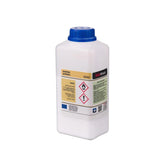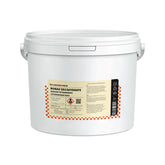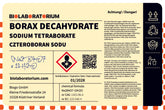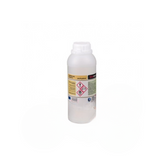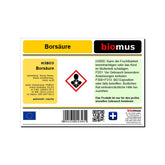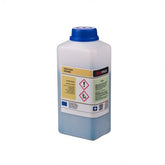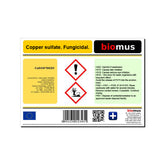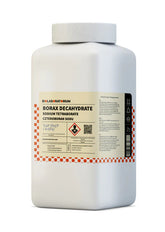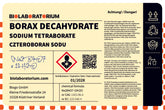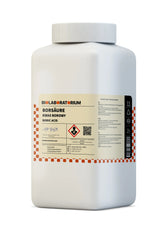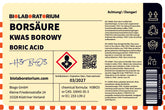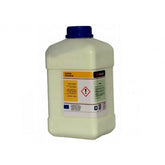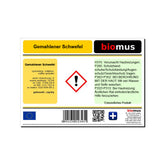Hydroxylamine hydrochloride – A versatile reducing agent for industry and analytics
Hydroxylamine hydrochloride is a chemical substance that plays an important role in industry and analytics. As an inorganic reducing agent, it is used in various application areas and offers numerous advantages thanks to its unique properties. In this blog post, we will examine hydroxylamine hydrochloride in detail – from its chemical properties to technical applications and analytical significance.
Chemical properties of hydroxylamine hydrochloride
Hydroxylamine hydrochloride, also known as hydroxylammonium chloride or oxammonium chloride, is a chemical compound with the molecular formula NH₃OH•HCl. It is a crystalline, white powder that is highly soluble in water.
The compound forms when hydroxylamine (NH₂OH) reacts with hydrochloric acid (HCl). This results in the formation of hydroxylamine hydrochloride salt, which is stable and easy to handle. Compared to pure hydroxylamine, it is significantly less reactive and therefore safer to store and transport.
From a chemical perspective, hydroxylamine hydrochloride is an amphoteric molecule that can function as both an acid and a base. In aqueous solution, it partially dissociates into hydroxylammonium cations (NH₃OH⁺) and chloride anions (Cl⁻). This characteristic makes it a versatile reaction partner in various chemical processes.
Technical applications of hydroxylamine hydrochloride
Due to its properties as a mild reducing agent, hydroxylamine hydrochloride has numerous industrial applications. Some of the most important areas of use are:
Reduction of nitro compounds
One of the main applications of hydroxylamine hydrochloride is the reduction of nitro compounds to amino compounds. This process plays an important role in organic synthesis, such as in the production of dyes, pharmaceuticals, or agrochemicals.
Metal reduction
Hydroxylamine hydrochloride can also be used to reduce metal ions. For example, silver(I) oxide can be reduced to metallic silver, which is important in the electronics industry.
Bleaching processes
In the textile industry, hydroxylamine hydrochloride is used as a bleaching agent. It enables the gentle brightening and decolorization of natural fibers like cotton or linen.
Analytical chemistry
Beyond technical applications, hydroxylamine hydrochloride also plays an important role in analytical chemistry. Here it serves as a reducing agent in various analytical methods, such as the determination of nitrate, nitrite, or transition metals.
Hydroxylamine in analytical chemistry
In analytical chemistry, hydroxylamine hydrochloride is a valuable tool for a wide range of applications. Some examples:
Nitrate and nitrite determination
Hydroxylamine can reduce nitrate (NO₃⁻) to nitrite (NO₂⁻). By subsequently determining the nitrite colorimetrically, the nitrate content in a sample can thus be measured indirectly.
Transition metal analysis
Many transition metals like iron, copper, or nickel can be converted to their lower oxidation states using hydroxylamine. This facilitates the quantitative determination of these metals in complex matrices.
Complex formation
Hydroxylamine hydrochloride can form stable complexes with certain metal ions. This complex formation is used for the selective separation and enrichment of metals from solutions.
Redox titrations
As a mild reducing agent, hydroxylamine hydrochloride is excellent for redox titrations. It can be used, for example, to determine oxidizing agents like chlorine, hydrogen peroxide, or potassium permanganate.
Conclusion: Versatile reducing agent with high relevance
Hydroxylamine hydrochloride is a chemical compound of significant importance in industry and analytics. Its properties as an amphoteric, mild reducing agent make it a valuable reaction partner in numerous technical processes and analytical methods.
From reducing nitro compounds to metal reduction and applications in analytics – hydroxylamine hydrochloride repeatedly proves its versatility and usefulness. No wonder it's considered an essential auxiliary substance in many industries.
Whether in organic synthesis, the textile industry, or instrumental analysis – hydroxylamine hydrochloride is a chemical all-rounder that's nearly indispensable in modern chemistry.
